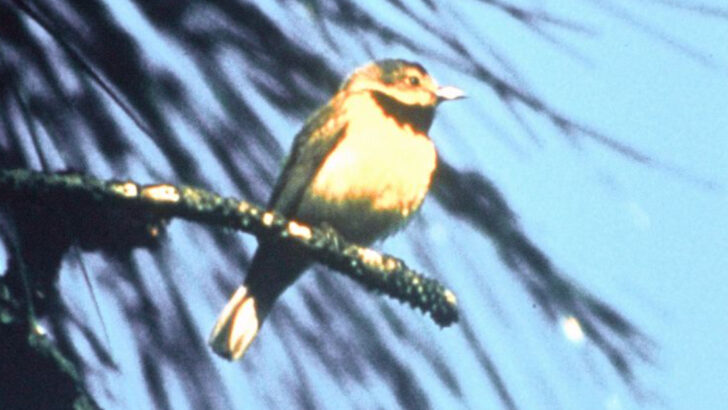Once upon a time, the morning sky was alive with music—and it wasn’t your alarm clock.
It was the flurry of wings, the chatter of robins, the wild symphony of warblers and meadowlarks pouring through open windows. Every sunrise was a concert, free of charge, conducted by the birds that owned the dawn.
Today, those voices have fallen silent.
Whole songs have vanished from neighborhoods, fields, and forests, slipping away so quietly most people didn’t even notice. The birds that once defined America’s mornings now exist only in memories, old field guides, and dusty stories.
Let’s rewind the clock and meet the feathered stars we lost—each one a reminder of how different the world sounded not so long ago.
Passenger Pigeon
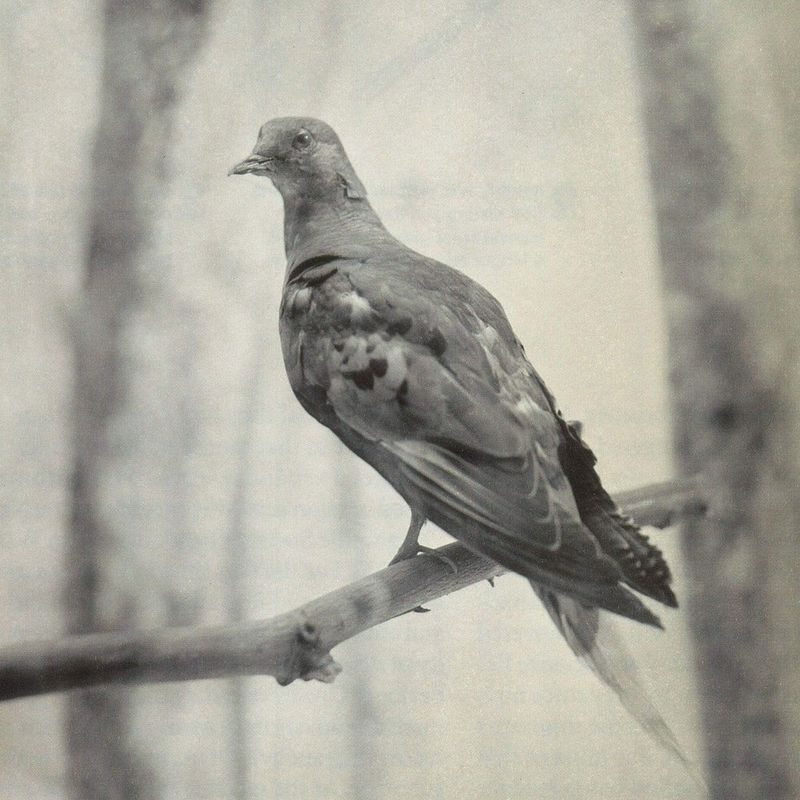
Once, the sky would darken with the vast flocks of passenger pigeons soaring above. These birds, numbering in the billions, were a symbol of the North American wilderness. Unfortunately, they were hunted to extinction by the early 20th century, their numbers dwindled by excessive hunting and habitat loss.
Imagine a time when these vibrant creatures painted the skies with their flight. Their disappearance serves as a somber reminder of nature’s fragility. Conservation efforts today aim to avoid such tragedies, ensuring that no more species share their fate.
Carolina Parakeet
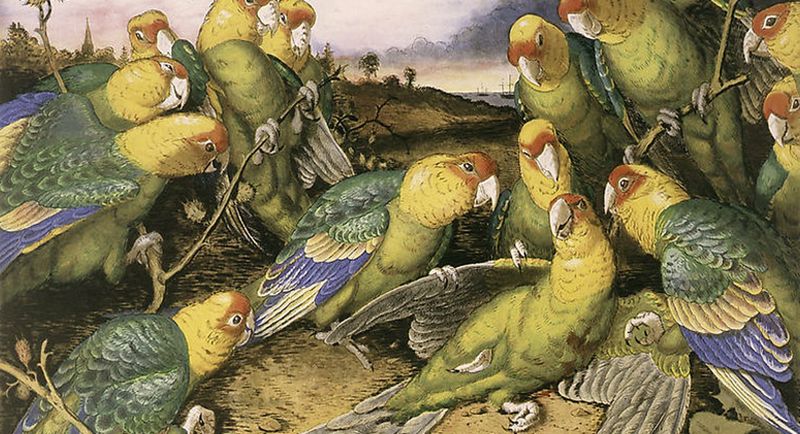
Bright, lively, and cheerful, the Carolina Parakeet was the only native parrot species in the United States. Its vibrant plumage and social nature made it a beloved sight. Sadly, deforestation and hunting for its feathers led to its decline by the early 1900s.
The forests are quieter without these chatty birds. Their charm and color are missed, encapsulating the loss of biodiversity. Efforts to preserve bird habitats now strive to prevent similar losses, fostering a future where such vibrant life can flourish again.
Heath Hen
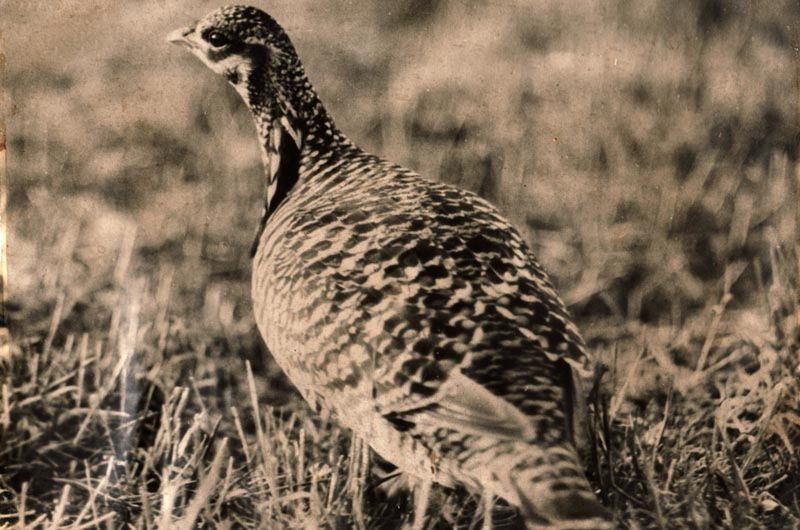
Heath Hens once roamed the grasslands of New England, their calls echoing across the vast open plains. This grouse species could be found in great numbers, symbolizing the wild character of the region. Habitat destruction and hunting led to their extinction in 1932.
In their absence, we mourn the loss of not just a species, but a part of America’s natural heritage. Today, conservationists draw inspiration from their story, working tirelessly to protect remaining grassland habitats and their current inhabitants.
Great Auk
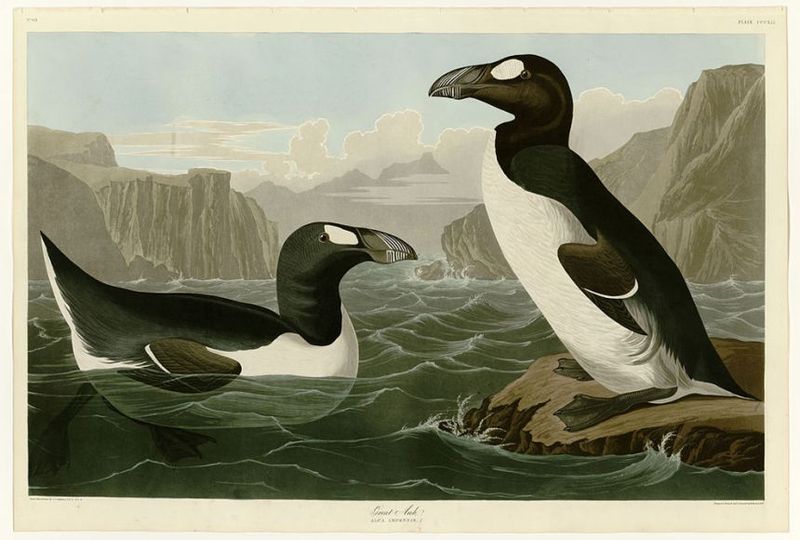
The Great Auk, a flightless bird once ubiquitous in the North Atlantic, was known for its distinctive black and white plumage. These penguin-like birds faced relentless hunting pressure for their feathers and meat, ultimately leading to their extinction in the mid-1800s.
The rocky shores where they once nested are now eerily quiet, a stark reminder of human impact. The Great Auk’s story is a catalyst for modern conservation efforts, highlighting the need for sustainable practices that protect vulnerable species.
Ivory-billed Woodpecker
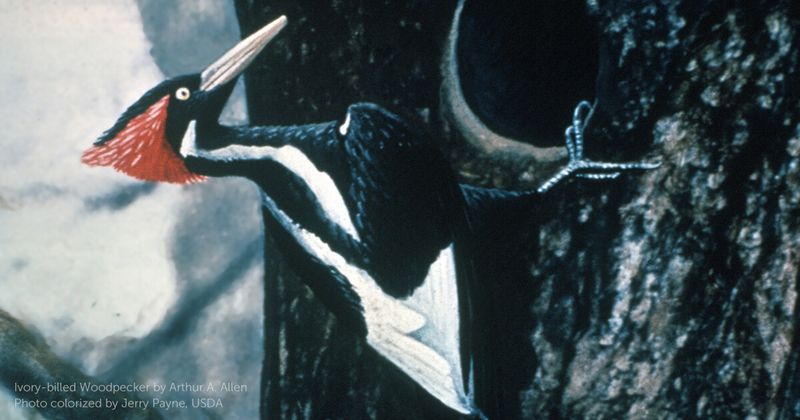
Dubbed the “Lord God Bird” for its striking appearance, the Ivory-billed Woodpecker was the largest of its kind in America. This majestic bird, with its striking black and white feathers, once thrived in the swampy forests of the southeastern United States.
Deforestation and habitat fragmentation led to its decline, with sightings becoming increasingly rare. Its story is a poignant reminder of the consequences of unchecked development. Conservationists continue to search for any surviving populations, hopeful that this symbol of wilderness might still be found.
Eskimo Curlew
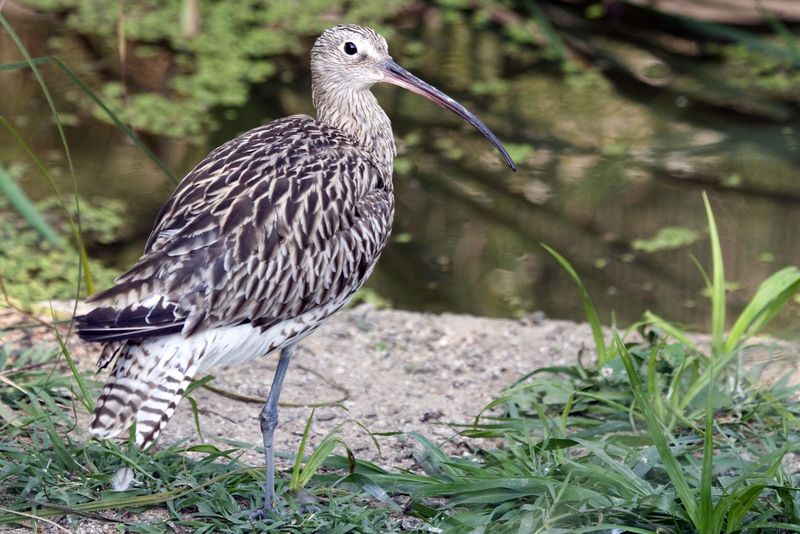
A long-distance migrant, the Eskimo Curlew once journeyed across continents, gracing North America’s wetlands. These birds were admired for their resilience and grace. However, overhunting and habitat degradation caused their numbers to plummet, leading to possible extinction.
The wetlands, now silent, mourn the loss of such remarkable travelers. Conservation initiatives are underway to protect migratory routes and habitats, ensuring the survival of other species that share similar paths. The Eskimo Curlew’s absence reminds us of the environmental stewardship needed to protect migratory birds.
Labrador Duck
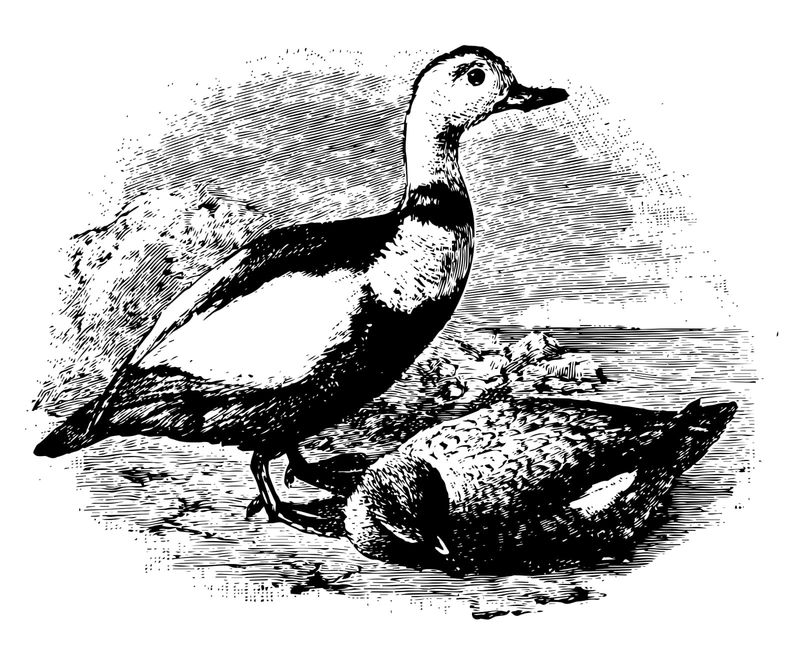
Mysterious and elusive, the Labrador Duck once graced the Atlantic coastlines with its presence. These sea ducks were known for their unique feeding habits, diving for mollusks and small fish. By the late 19th century, they had vanished, likely due to habitat changes and over-exploitation.
Their mystery captivates ornithologists even today, as little is known about their life history. The Labrador Duck’s fate underscores the importance of understanding and preserving marine ecosystems. Protecting the coasts can help prevent such enigmatic losses in the future.
Bachman’s Warbler
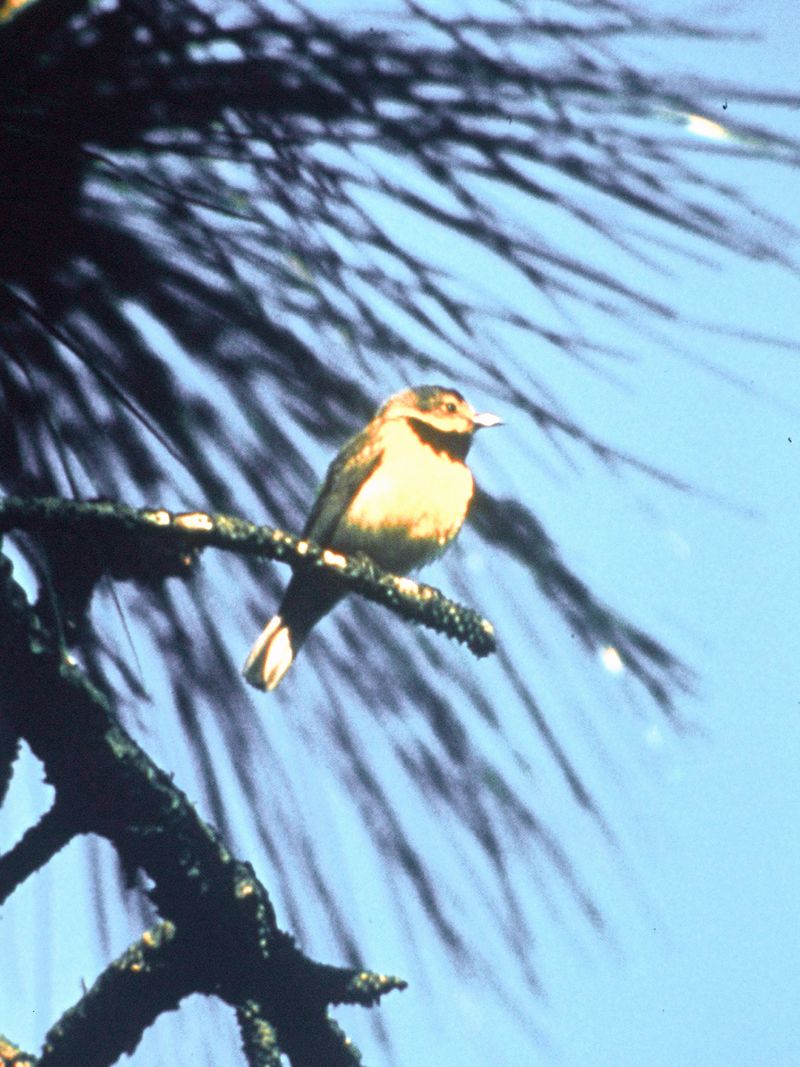
Once a jewel of the southern forests, Bachman’s Warbler was known for its vibrant yellow plumage and melodic song. This small warbler thrived in the rich, dense habitats of the southeastern United States. Unfortunately, habitat destruction and changes in land use led to its decline.
The silence of the forests without their song is palpable, a bittersweet reminder of what has been lost. Conservation efforts today focus on preserving and restoring habitats, hoping to prevent other species from fading into memory like the Bachman’s Warbler.
Dusky Seaside Sparrow
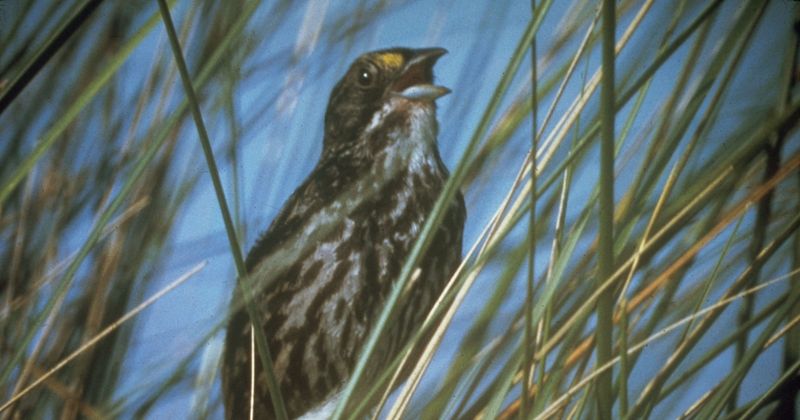
Endemic to the marshes of Florida, the Dusky Seaside Sparrow was a small, dark-feathered bird with a distinctive call. Its survival was intricately tied to the wetlands, which faced severe degradation due to development and pollution.
Declared extinct in the late 20th century, the sparrow’s loss is a poignant reminder of the fragility of life in specialized habitats. Efforts to restore and protect coastal ecosystems continue, with hopes of safeguarding other species at risk of a similar fate.
Maui Nui Finch
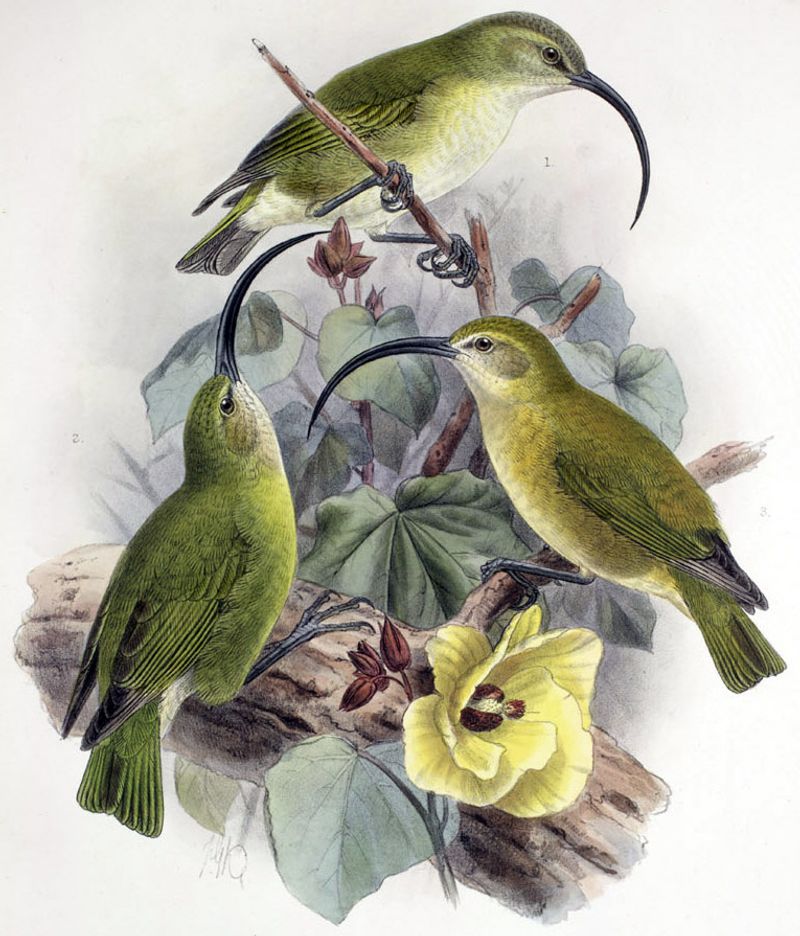
Native to the lush forests of Hawaii, the Maui Nui Finch was a small, colorful bird known for its distinct chirps and vibrant plumage. Habitat destruction and the introduction of invasive species contributed to its decline.
The tropical forests are quieter now without their playful calls. Conservationists are working to protect the remaining native Hawaiian avian species, learning from the loss of the Maui Nui Finch. This bird’s story is a testament to the interconnectedness of island ecosystems and the pressing need to protect them.
Guadalupe Caracara
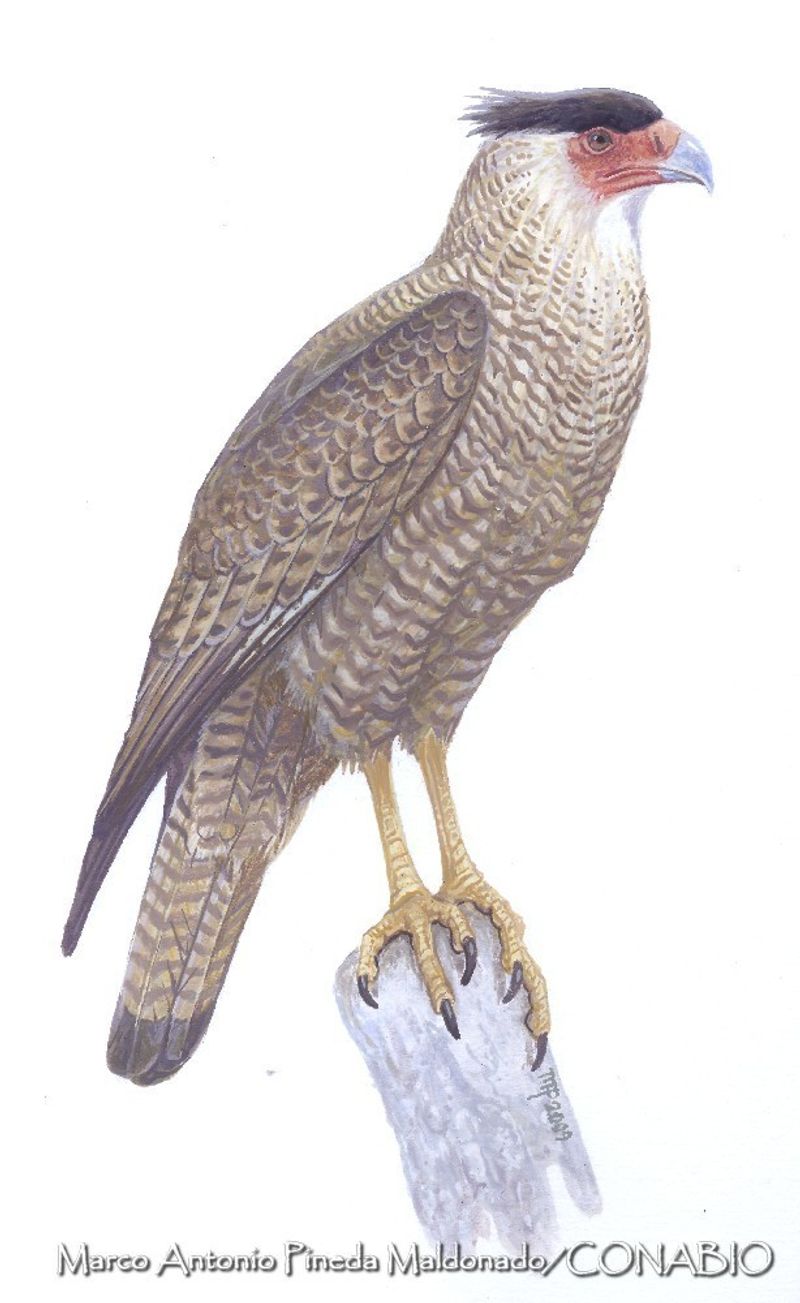
Once dominating the skies of Guadalupe Island, the Guadalupe Caracara was a striking bird of prey with a bold personality. Habitat destruction and hunting led to its extinction by the early 1900s.
Today, the skies over Guadalupe are emptier without these commanding birds. Their absence is a call to action for preserving the delicate balance of island ecosystems. By protecting these fragile environments, we can perhaps prevent such vibrant characters from disappearing altogether.
Kakawahie
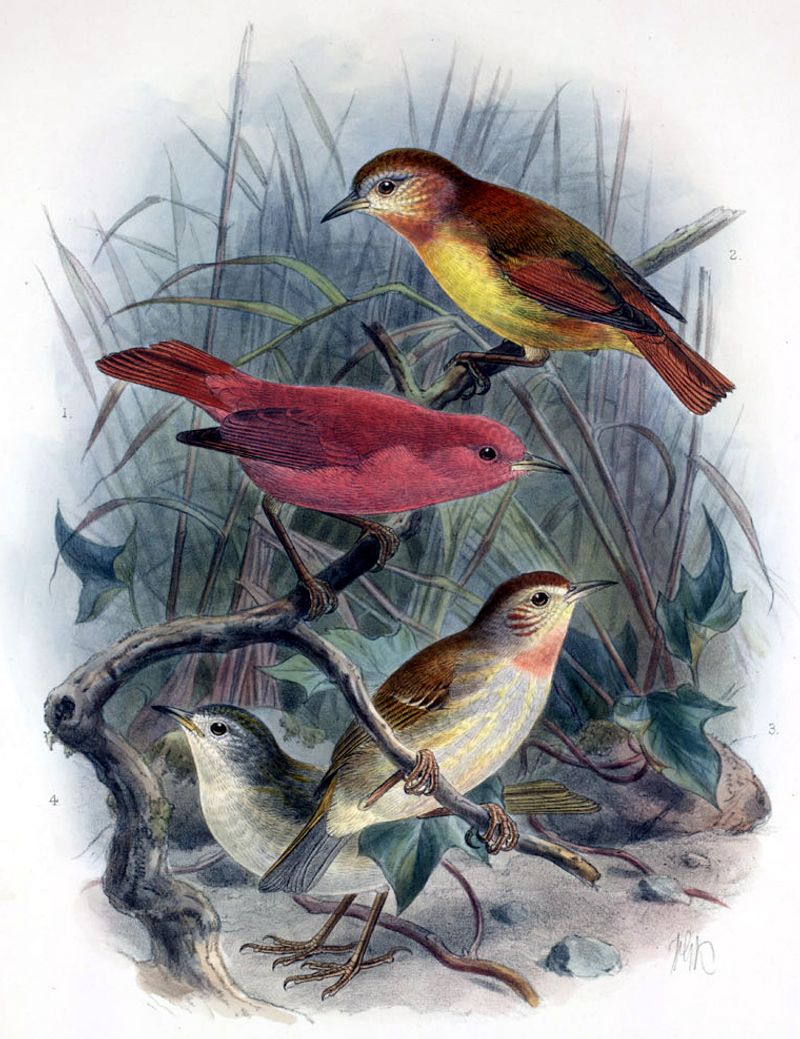
A striking bird with brilliant red feathers, the Kakawahie was endemic to the Hawaiian island of Molokai. These birds were once a common sight, flitting through the dense canopy of the forests. However, habitat destruction and disease led to their extinction.
The loss of the Kakawahie echoes through the forests that once sheltered them. Efforts to protect the remaining native Hawaiian species continue, with the Kakawahie’s story serving as a grim reminder of what stands to be lost if conservation efforts waiver.
New Zealand Quail
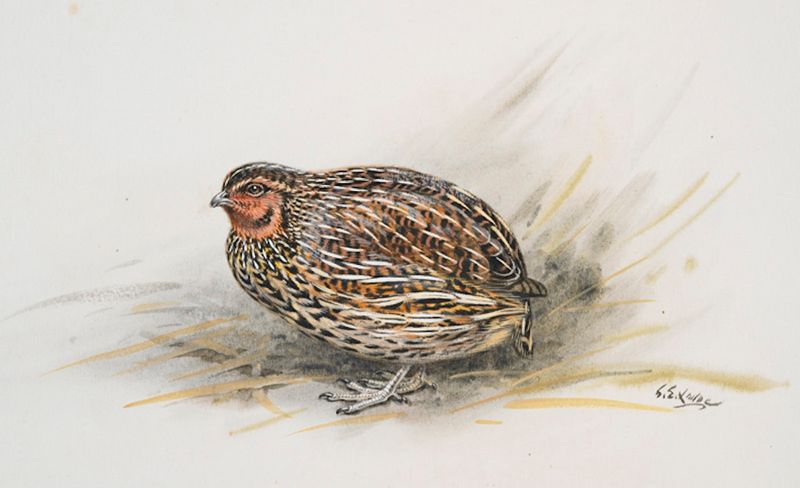
Although not native to America, the New Zealand Quail’s tale resonates globally. This small bird was once abundant in its homeland but fell victim to habitat destruction and the introduction of predators. By the late 19th century, it had vanished from the landscape.
The meadows where they once thrived now echo with their absence. This quail’s extinction is a reminder of the global effort needed to preserve avian diversity. Every step towards safeguarding habitats helps prevent other species from sharing a similar fate.
Pink-headed Duck
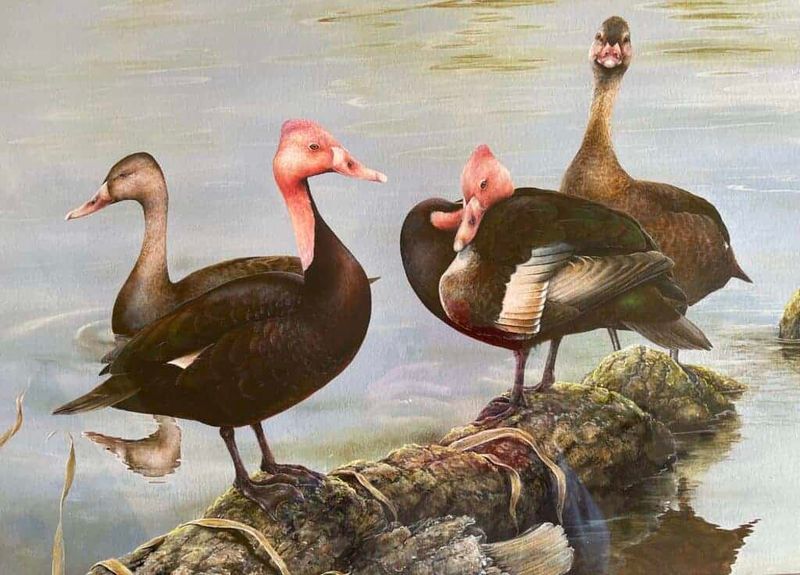
With its unique coloration, the Pink-headed Duck was a remarkable bird that once inhabited the wetlands of India and Bangladesh. Known for its distinctive pink head, it was a sight to behold. Overhunting and habitat loss have led to its presumed extinction.
The rich wetland landscapes feel emptier without this dazzling duck. Efforts to protect wetland habitats continue globally, aiming to prevent further losses. The Pink-headed Duck’s story serves as a poignant example of the impact human activities can have on even the most distinctive species.
Atitlán Grebe
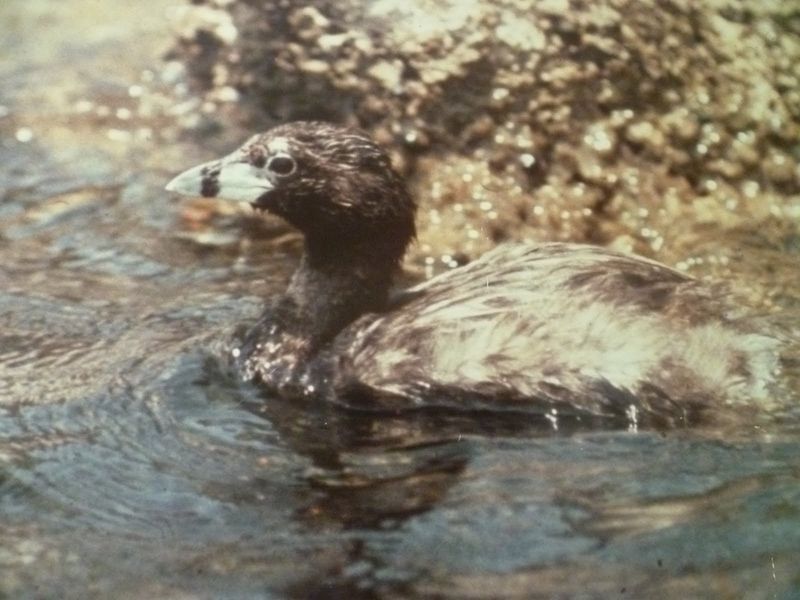
Endemic to Lake Atitlán in Guatemala, the Atitlán Grebe was a unique waterbird with striking black and white plumage. They were a symbol of the lake’s biodiversity but faced challenges from habitat changes and introduced predators.
Declared extinct in the late 20th century, their loss is a constant reminder of the delicate balance in aquatic ecosystems. Conservation efforts around Lake Atitlán now focus on preserving the remaining wildlife, drawing lessons from the Grebe’s unfortunate demise to ensure a more stable future for the area’s biodiversity.

